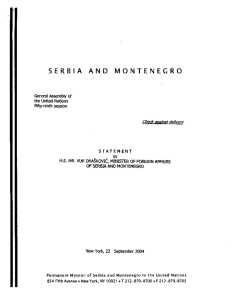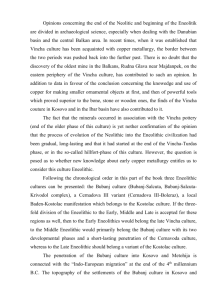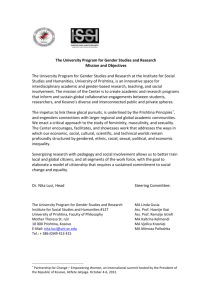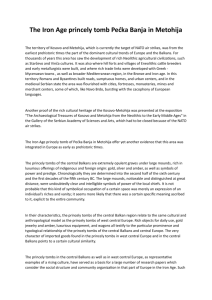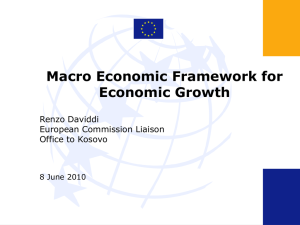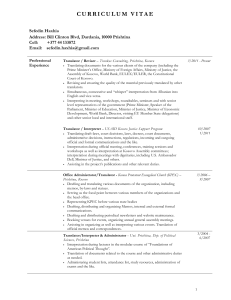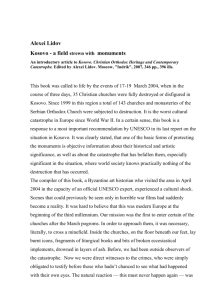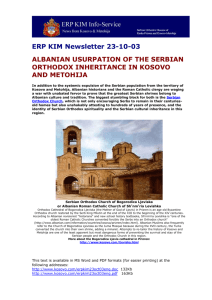05_the_Iron_Age_review
advertisement
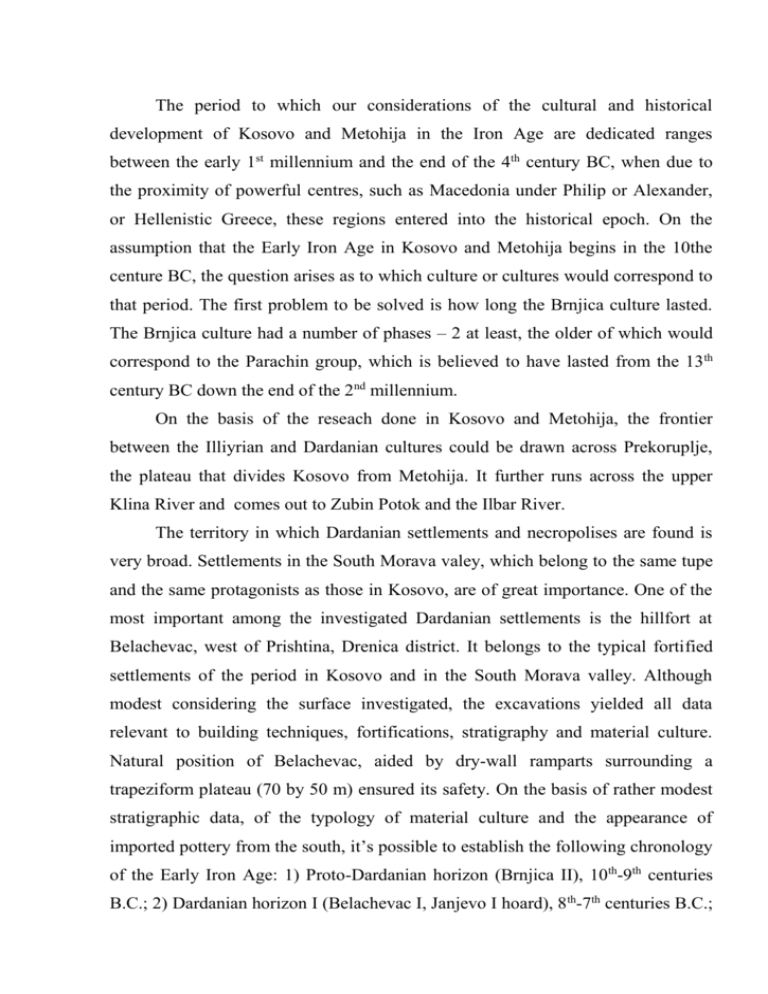
The period to which our considerations of the cultural and historical development of Kosovo and Metohija in the Iron Age are dedicated ranges between the early 1st millennium and the end of the 4th century BC, when due to the proximity of powerful centres, such as Macedonia under Philip or Alexander, or Hellenistic Greece, these regions entered into the historical epoch. On the assumption that the Early Iron Age in Kosovo and Metohija begins in the 10the centure BC, the question arises as to which culture or cultures would correspond to that period. The first problem to be solved is how long the Brnjica culture lasted. The Brnjica culture had a number of phases – 2 at least, the older of which would correspond to the Parachin group, which is believed to have lasted from the 13th century BC down the end of the 2nd millennium. On the basis of the reseach done in Kosovo and Metohija, the frontier between the Illiyrian and Dardanian cultures could be drawn across Prekoruplje, the plateau that divides Kosovo from Metohija. It further runs across the upper Klina River and comes out to Zubin Potok and the Ilbar River. The territory in which Dardanian settlements and necropolises are found is very broad. Settlements in the South Morava valey, which belong to the same tupe and the same protagonists as those in Kosovo, are of great importance. One of the most important among the investigated Dardanian settlements is the hillfort at Belachevac, west of Prishtina, Drenica district. It belongs to the typical fortified settlements of the period in Kosovo and in the South Morava valley. Although modest considering the surface investigated, the excavations yielded all data relevant to building techniques, fortifications, stratigraphy and material culture. Natural position of Belachevac, aided by dry-wall ramparts surrounding a trapeziform plateau (70 by 50 m) ensured its safety. On the basis of rather modest stratigraphic data, of the typology of material culture and the appearance of imported pottery from the south, it’s possible to establish the following chronology of the Early Iron Age: 1) Proto-Dardanian horizon (Brnjica II), 10th-9th centuries B.C.; 2) Dardanian horizon I (Belachevac I, Janjevo I hoard), 8th-7th centuries B.C.; 3) Dardanian horizon II (Belachevac II, Janjevo II hoard), end of 7th and the 6th centuries B.C.; 4) Dardanian horizon III (Karagach, warriors’ graves, Shiroko, Tenesh-dol II), 5th century B.C. Archaeological finds indicate that the region of Metohija was relatively late in becoming integrated into the “Illyrian world”. Unfortunately, we can speak of the material culture of the Illyrian population on the territory of Metohija only on the grounds of the inventory from the graves under mounds. One of the most significant finds, not so much because of the questions it raises but for its aesthetic standards and quality of workmanship, is the one from Pechka Banja. The tumulus near Pechka Banja is situated on the northern rim of the Beli Drim valley. Two graves were found with contents that immediately drew attention of the diggers so that thanks to the rapid intervention of archaeologists from Prishtina it was possible to save the bulk of the material and to reconstruct the archaeological context in which it was found. Judging by these contents, it becomes obvious tht two graves are involved, one of a male and another of a female who were buried in the same way as in other tumuli in Metohija and, more broadly, in the area of the Glasinac-Mati complex. The pits have a stone pavement of irregular shape and the length approximating that of a human body. The reconstruction of the grave goods leads to the conclusion that the military equipment probably belonged to the man’s grave: silver-plated studs (smaller and larger) on the chest, rather corroded iron weapons, a triangular whetstone stand and, a particularly important find, three helmets of Graeco-illyrian type. In concluding this survey of the Iron Age in Kosovo and Metohija it’s necessary to point out several important facts. First of all, the fact that the material culture of the region was the meeting-place of influences of various geographical, cultural and ethnic origin. For example, there were influences coming from the north and reaching mainly the eastern part of the area. The earliest among them belong to the so-called transitional period and are reflected in the style of the younger Brnjica phase (10th-9th centuries B.C.), to be followed by those coming from the Basarabi complex (certain shapes of fibulae, ceramicware, Janjevo I hoard). The second group of influences. Those which reached Metohija from the Glasinac area of northern Albania (the Mat valley), manifested themselves in the 6th century B.C. in the penetration of the Illyrian culture and the building of large, mainly “warriors’ tumuli”, such as Romaja and Prchevo. The third group consists of the influences that came from Greek colonies on the Adriatic coast. They are represented at the sites of Metohija rather than in Kosovo (for example, ceramics and jewelry at Pechka Banja). The fourth group of influences affecting eastern Kosovo came from Greece via Macedonia and Paeonia. They are also reflected in some findings from the South Morava valley, particularly in those from the hillfort settlemets near Krshevica or Bushtranje. Among their specific features is grey wheel-made pottery which observed Greek models even when it was the product of local industry.
